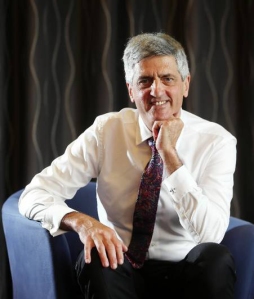Welcome to the Fly! web site.
This is an additional resource for FLY!, adding concepts and stories about the Elements of Resilience. It also includes:
- sections where I answer your questions about resilience,

- errors and corrections,
- index and
- additional references.
This site will expand with time.
If you wish to be notified of changes and additions to this site, then please subscribe to this site by selecting the Follow icon at the right of this page.

Captain, as already with QF32, having started reading FLY, one does not want to put it out of the hand anymore. The book is a MUST READ and I would call it a life bible. It does not only assist people in a leadership function (be it aspiring or experienced) but it serves likewise as a wonderful guide through life by showing true core values. Reading the book invites self-reflection and re-thinking of own ideas and perspectives, as well as a better understanding of the how and why of the behaviour of others. On the whole, the book is simply packed with knowledge and eye-openers. HIGHLY RECOMMENDED!!
LikeLike
Good day Captain,
I have some questions regarding the following.
Last week I attended the Canadian Women in Aviation Conference. One of the sessions, given by an emergency planner from one of the major airports in the country, was about emergency response, what happens after an accident, etc.
One of the things that was mentioned was that the crew has to be separated from passengers and taken to a separate location. That bothered me, because I remember what you wrote about how you debriefed the passengers and the results that this had, versus other cases where the crew was not allowed to see the passengers with quite different consequences.
When I brought this up, the presenter said that it doesn’t mean she agrees with the rule, but it’s a requirement, and somebody in the audience said that it had something to do with the unions.
In “FLY” you mention how you told the police officer to take you to the passengers in the terminal.
If you don’t mind me asking, police aside, were there any airline or union rules prohibiting you from doing so? If there were, did the rules change after the positive outcomes of your debrief with the passengers? If there weren’t, do you know why other airlines/unions have them and if anything can be done to change that?
Regards,
Valeriya
LikeLike
Hi Valeriya,
I am not aware of any emergency response, company or union requirement to separate the flight and cabin crews from their passengers after an accident. If there is limited or no third party support at the accident scene, then the crew might be the only trained professionals available who can protect the passengers, so their continued control is vital. If there is full third party support, then the crew may wish to be separated. I think the decision whether the crew should be separated from their passengers depends upon the individual circumstances at that time.
I am acutely conscious of the responsibility of the pilot-in-command, to be responsible for the safety of the passengers. This responsibility is written in law (Australian CAR 224). During QF32, I determined that this responsibility extended up until I was comfortable that the third party resources (not just could, but) would look after the passengers better than I would look after them. This is why I was determined not to be arrested by the police at the aircraft. So, on descending the aircraft stairs, I said to the awaiting policeman in a deep, clear, confident and firm voice, ‘Take me to the passengers at the terminal – NOW!’ (FLY! p80). This was a loud and clear instruction to the police to take me to the terminal so that I would continue exercising my responsibilities to my passengers.
These values are simple, clear and paramount. These values are mine. I do not agree with critics suggestions that my decisions and actions regarding the police and my passenger debriefings (my Full and Open Disclosure and my Personal Guarantee) were wrong.
My values were not set on the day of the QF32 incident. I researched scores of accidents and incidents well before my QF32 event (QF32 p111). I detailed in my books QF32 and FLY! (page 79) how I learned from other pilots’ incidents, where they had been mistreated by the authorities after their incidents and had been taken away from their passengers. The stories in QF32 and FLY! of Peter Burkill (BA38), Kevin Sullivan (QF72) and David Princehorn (an Osaka incident) are all excellent examples where the police behaved in a manner that did not help the pilots. I stress again what I wrote in FLY! – read Peter Burkill’s book “Thirty Seconds to Impact” to read a case study of what not to do (by the many authorities, airline, union, media, medical) during-after a crisis. I suggest you do your own research and come to your own conclusions.
You cannot be a leader unless you know who you are responsible to and accountable to. This is not a flippant statement because many people get their priorities wrong. A company board director is responsible to the company and accountable to the shareholders (FLY! p182). When my friend, the new CEO of one of Australia’s largest hospitals asked the clinicians there who they were responsible and accountable to, half of the clinicians could not answer that question.
Remember, when an accident occurs, you are RESPONSIBLE for your passengers, and ACCOUNTABLE to the police, your airline and other authorities. Passengers look up to the captain for information and instructions, so make sure you are (in Gene Kranz’s terms) Tough and Competent for your role, because in these critical situations, failure is not an option.
LikeLike